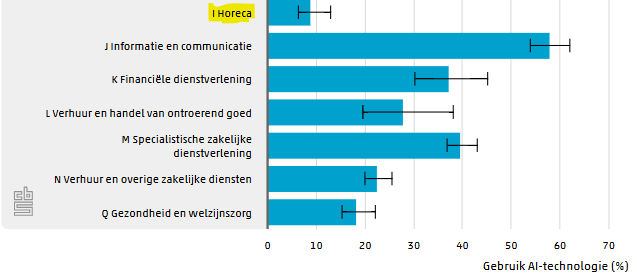A new concept is emerging: vibe marketing. Coined in tech, vibe marketing now describes a hands-on-yet-automated approach to managing customer engagement. In loyalty marketing, it means using intelligent tools to create highly personalized, data-driven programs—without getting lost in technical complexity. Rather than replace marketers, vibe marketing frees them to focus on strategy and creativity. For those looking to scale loyalty efforts with precision and agility, VEMT provides the structure and automation needed to bring the right “vibe” to every customer interaction.

Why using Subdomains in your loyalty emails improves results
Loyalty marketers usually have a lot of expertise about email marketing, since connecting with your members often works best with intensively using email; both campaigns and (automated) transactional emails.
VEMT advises our clients to use different subdomains for various use of email to optimize your loyalty marketing and your email marketing. This article explains why that is so.
Things you’d like to avoid
You know that avoiding your mails being marked as spam isn’t the easiest thing. You want to avoid those recipients marking your mails as spam, and the best thing for that is to send them relevant emails they love to receive. Yeah… that sounds great, but you are already doing that and still, there is always that pesky bunch that hit that spam button anyway. You’d like to be prepared for the impact of that, most importantly about the reputation of your sending domain.
Reputation and domain
Your reputation depends on different factors. The content and format of your email matter. You have already invested quite some hours to optimize those. One thing you might have missed is the domain you send your various types of emails from.
What is a subdomain?
A domain is a unique identifier of a specific IP-address, for example used to route visitors to your website or to send emails from. ‘vemt.com’ is the root domain for our company. A subdomain is a “child” of that domain, indicated by a prefix. So friends.vemt.com is a subdomain, just like e.vemt.com or members.vemt.com. In email addresses, usually the subdomain is what comes immediately after the @ symbol, for example in connect.with@e.vemt.com, then e.vemt.com’ is the subdomain (not what comes before the @-sign; that can be anything).
Why subdomains?
Subdomains are the key to create strong, stable sending reputations. Each subdomain provides you with an independent reputation, so you are no longer dependent on the reputation of your root domain. Separating your reputations is especially important for brands or retailers sending lots of email, which often gets split into various email types:
- Customer Service responses
- Corporate emails (from staff to the outside world)
- Transactional emails (registrations, password resets, order receipts, shipping notifications, password resets)
- Campaigns (your (segmented) newsletter, promotions/coupons, new releases, etc).
Your loyalty program will use many (automated) transactional emails and will use the list of subscribers and subscribed members to send campaigns to. And your servicedesk will send emails to your members too.
These categories have a (very) different open-rate, engagement rate and ‘mark-as-spam’-behavior. Password reset emails and registration confirmations are opened super fast, while your campaigns might not reach the same levels, unfortunately, no matter how relevant you make them. And they will also be marked as spam more often, even if you did your best to avoid that.
This potentially results in a lot of variety in reputation between the email types, theoretically (and sometimes really) having your campaigns (significantly) bring down the reputation of the other categories. Which…. results in lower deliverability of all your email types.
You want to manage that
If you (or your intern) would one day make an email marketing error that destroys your reputation, the overall negative impact on the rest of the company is significantly less if that happens on a subdomain. Because reputations of subdomains are independent from each other and from the root domain’s reputation, your campaign failure would not drag down the reputation of your transactional emails, your corporate emails and your service desk communication.
Worst case, if your campaign error leads to a global blacklisting of your sending domain (believe me, it happens). If you have used a subdomain for campaigns, you do not block deliverability of all other subdomains, which will cause a sigh of relief to your colleagues responsible for those.
You even – in case the error has been more than just a few people marking your campaign as spam – have the option to move your campaigns to another subdomain and start out freshly, avoiding those same errors in the future. Of course, you’d like to avoid that scenario, but it’s a lot easier to arrange when you already have set up a structure of subdomains for your various types of emails.
Extra benefits: insight, reporting and 3rd parties
When all email types listed above use the root domain, it’s difficult to see which factors impact your reputation. If there are issues, you will have more insights using subdomains. Therefore it’s easier to find a potential problem cause. And when you find the cause, correcting is simpler and less complex when using subdomains.
The same goes for reporting (through tracking) of performance. Tracking the performance of various subdomains delivers extra insights into what really matters: conversion of your campaigns. The open rates of transactional emails will always exceed the campaign open rates, but using different subdomains will allow you to dig deeper by tracking them independently, further than using different UTM-codes.
Last, but not least, when you work with 3rd parties and have them deliver the tools to execute campaigns, delivered automations that support many transactional emails, etc. you might want to make sure you have some ability to switch and decrease dependency. That’s not necessarily because those 3rd parties don’t deliver, but it’s probably a good idea to have your hands free for future changes.
How do VEMT clients design their subdomains?
Of course it varies how our clients have designed their subdomain structure, but over the years, we have seen the best practices to follow this design structure:
- e.vemt.com-pattern for campaigns
- t.vemt.com-pattern for transactional emails
- vemt.com (root)-pattern for corporate emails
- support.vemt.com-pattern for the service desk / Customer Support etc.
Of course, here you replace vemt.com with your own domain name.
Some clients go wild and add a subdomain for each department (for example sales.vemt.com or hr.vemt.com), so also the corporate emails are split among subdomains, but there are no benefits to reputation or your loyalty program to be achieved because of this.
Let us know if we can help designing your loyalty email strategy or more specifically have a look at your subdomains.





